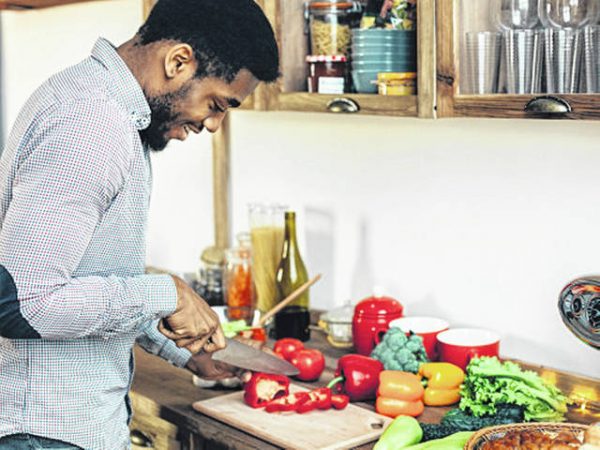
When stressed, eat vegetables, fruits, whole grains, 1% or fat-free dairy, seafood, and plant proteins, rather than comfort foods or junk food. Choose fruit for dessert instead of other sweet food.
Photo courtesy of Getty Images
Question: My kids are out of school for several weeks now, as part of my state’s efforts to lessen the spread of coronavirus. As a result, I’m stressed, the kids are stressed, and I’ve found myself reaching for rich, high-sugar foods that I typically avoid because they’re not the healthiest options. Any tips on how I can eat better during this time of high stress?
Answer: You’re not alone. People often reach for comfort foods during times of high stress. Many times, those foods tend to be high in sugar and low in fiber.
It’s best to avoid those foods because they can increase the development of chronic inflammation in our bodies, according to Patricia Brinkman, family and consumer sciences educator with Ohio State University Extension.
That’s an issue because high levels of chronic inflammation are believed to cause rheumatoid arthritis, psoriasis, asthma, reduced kidney function, and inflammatory bowel disease, and prolonged chronic inflammation increases the risk of cancer, heart disease, diabetes, and other diseases, Brinkman wrote in Eating Healthy During Stressful Times, an Ohioline fact sheet.
Ohioline is OSU Extension’s free online information resource and can be found at ohioline.osu.edu. OSU Extension is the outreach arm of The Ohio State University College of Food, Agricultural, and Environmental Sciences.
“Even low amounts of inflammation can increase your risk of obesity, depression, and the effects of aging,” she wrote. “By eating a healthier diet, we may reduce our risk of chronic inflammation and diseases.”
Some examples of healthy eating habits can be found by following these three plans, Brinkman says:
– Healthy U.S.-Style Eating Pattern, based on guidance found in the 2015 USDA Dietary Guidelines
– Healthy Mediterranean-Style Eating Pattern
– DASH (Dietary Approaches to Stop Hypertension) Diet
“All three plans encourage us to eat plenty of vegetables and fruits, whole grains, low-fat or fat-free dairy, and seafood and plant proteins,” she said. “All three plans limit or encourage people to avoid consumption of empty calories including foods with added sugar, or drinking excess, as well as alcohol, refined grains, saturated fat foods, and high sodium foods.”
When crafting a healthy eating plan for a person on a 2,000-calorie diet per day, Brinkman says to consider consuming the following:
– Vegetables—2 to 4 cups
– Fruits—at least 2 cups a day
– Whole grains—3 to 4 ounces a day
– Fish/seafood—8 to 16 ounces a week, for omega-3
– Lean plant proteins or meats—6 to 8 ounces a day
– Nuts and soy—4 to 6 ounces a week
– Olive oil—1 to 2 tablespoons a day
– Dairy (1% or skim)—1 to 3 cups a day
– Alcohol—0 to 1 drink a day
Brinkman advises that you eat lots of fiber by eating vegetables, fruits, whole grains, and nuts, noting that, “fiber increases the anti-inflammatory properties from these foods. Add some garlic, onion, pepper, ginger, turmeric, oregano, thyme, and rosemary for additional anti-inflammatory properties.”
“When you are in a very stressful time, choose to eat vegetables, fruits, whole grains, 1% or fat-free dairy, seafood, and plant proteins, rather than comfort foods or junk foods,” she said. “You can also choose to eat fruit for dessert instead of other sweet foods.”

Chow Line is a service of The Ohio State University College of Food, Agricultural, and Environmental Sciences and its outreach and research arms, Ohio State University Extension and the Ohio Agricultural Research and Development Center. Send questions to Chow Line writer Tracy Turner, 364 W. Lane Ave., Suite B120, Columbus, OH 43201, or turner.490@osu.edu.


